11 Tips for Using Rocks for Landscaping Around Trees
Landscaping around trees with rocks can enhance the beauty of your yard while supporting the health of your trees. By choosing the right materials and maintaining proper care, you can create a natural, functional environment that promotes tree growth and improves the overall look of your landscape. It is important to consider factors like drainage, tree root protection, and rock selection to ensure both aesthetic appeal and tree vitality. With the right approach, you can achieve a balanced landscape that benefits both your trees and your outdoor space.
This post may contain affiliate links, which helps keep this content free. Please read our disclosure for more info.
Prioritize Proper Drainage
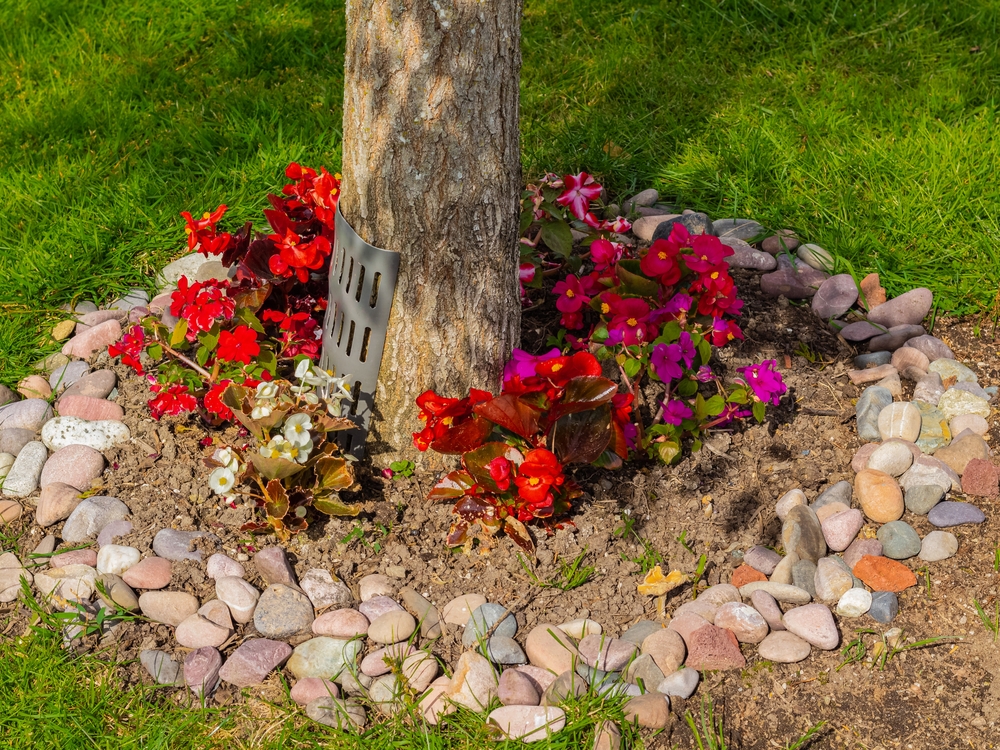
When landscaping around trees with rocks, proper drainage is critical for tree health. Rocks should be placed in a way that allows water to drain away from the tree’s root zone. If drainage is not properly accounted for, it can lead to water pooling around the base of the tree, potentially suffocating the roots and causing root rot. To avoid this, ensure that the ground slopes away from the tree and use permeable rocks that allow water to seep through easily.
Another key aspect of drainage is creating a slight slope around the base of the tree. This allows water to flow away from the trunk and prevents it from becoming stagnant. Consider using a mix of rocks with different textures and sizes to ensure water can travel freely and drain effectively.
Leave Space Around the Trunk
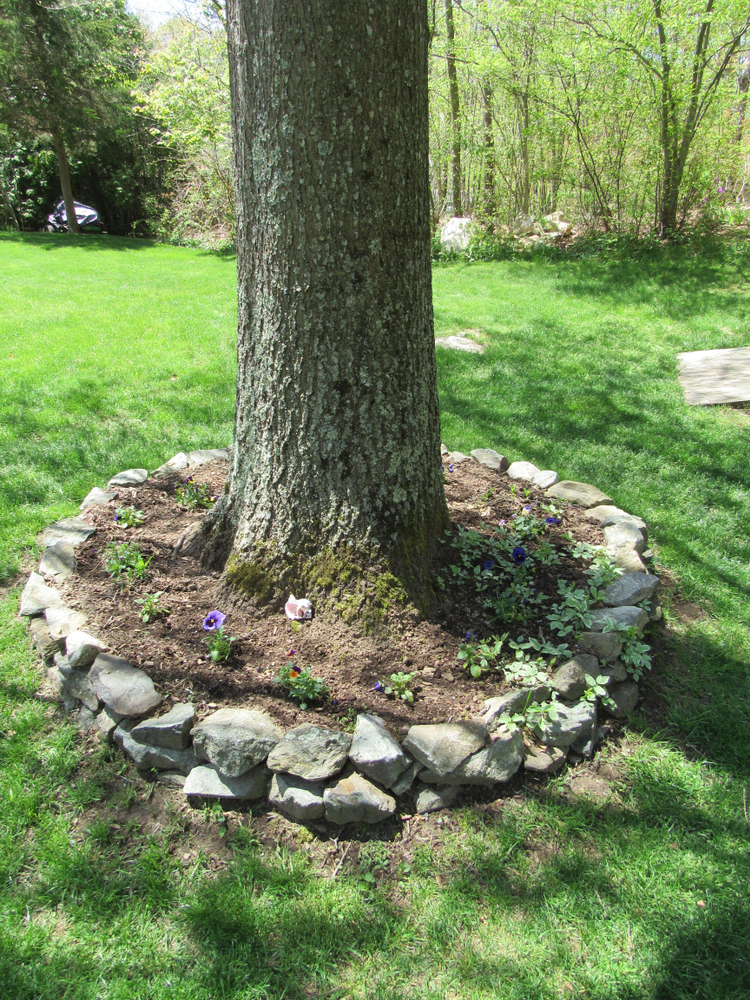
It is essential to leave space around the trunk when landscaping with rocks. Avoid piling rocks too closely to the tree’s trunk, as it can interfere with airflow to the bark and lead to moisture buildup. The tree needs to breathe and should not be suffocated by rocks or soil. A space of a few inches around the trunk ensures that air can circulate, keeping the bark healthy and preventing fungal growth.
Additionally, leaving space around the trunk helps with maintenance. It allows for easier inspection of the tree’s health and makes it simpler to apply mulch or fertilizers if necessary. This space also reduces the risk of damage to the tree during landscaping activities.
Choose the Right Rock Size
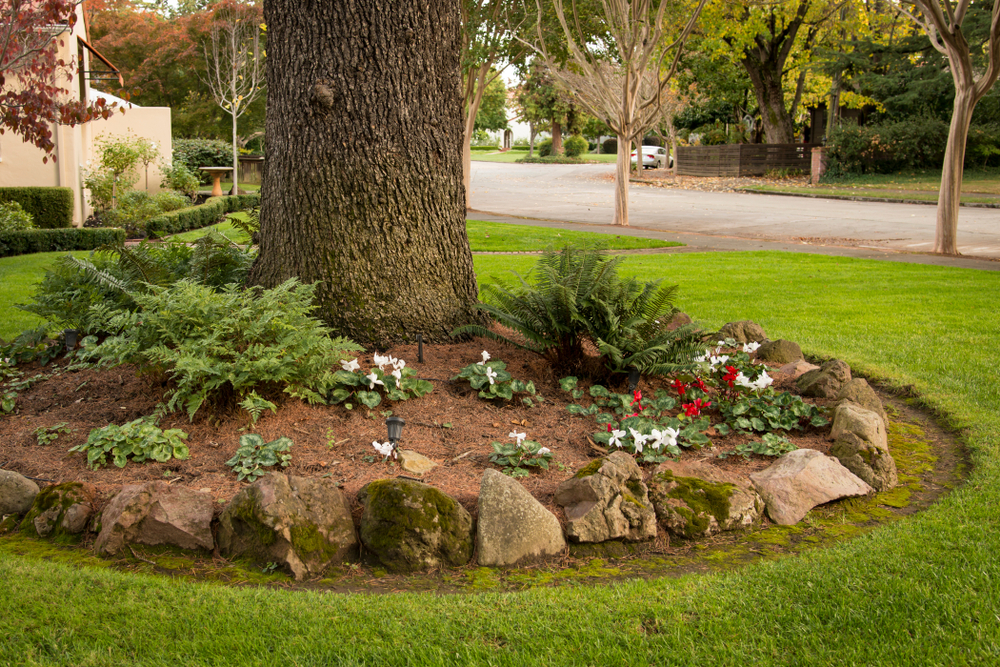
Choosing the correct rock size for your landscaping project can make a big difference in the overall appearance and health of the tree. Large rocks might create an aesthetic barrier around the tree, but they can limit the amount of oxygen that reaches the roots. Smaller rocks, like gravel, are better for promoting airflow and water penetration, making them ideal for tree health.
In addition to size, think about the shape of the rocks. Angular rocks may shift over time, potentially causing an uneven surface that could affect the tree’s growth. Rounded rocks are a better option, as they tend to stay in place and provide a more stable foundation for landscaping.
Avoid Using Plastic Barriers Under Rocks
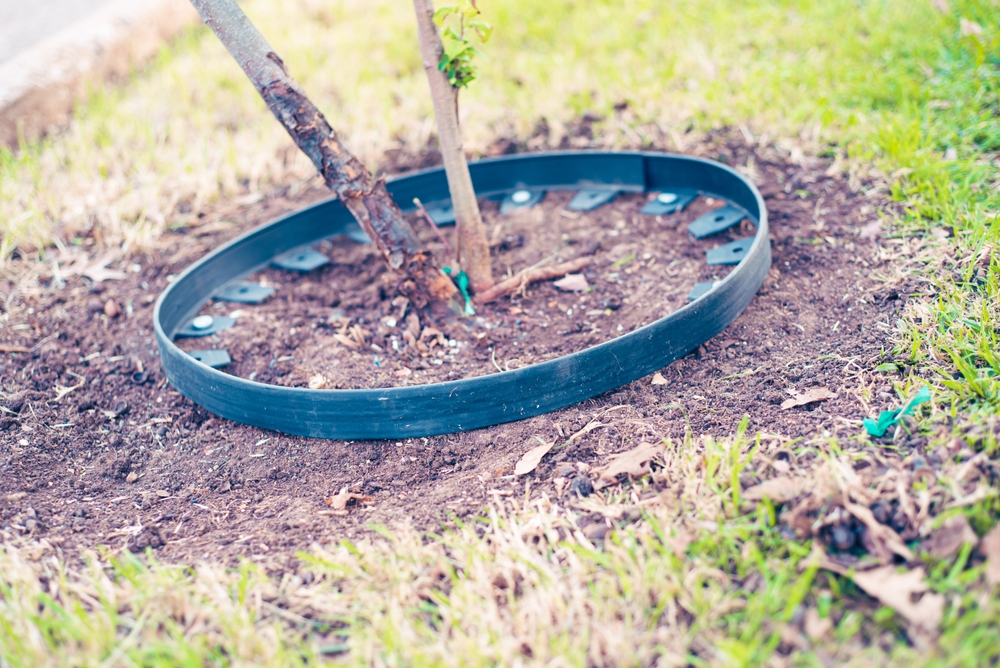
While it may seem like a good idea to use plastic barriers to keep rocks from mixing with the soil, this can harm the tree. Plastic does not allow for water or air to reach the roots effectively, which could lead to moisture buildup or dry spots. It also prevents the soil from draining properly, which could stress the tree and impact its health.
Instead of plastic, consider using natural materials like landscape fabric, which still allows for drainage and airflow. This will help keep the rocks in place while providing the tree with the care it needs.
Incorporate Mulch with Rocks
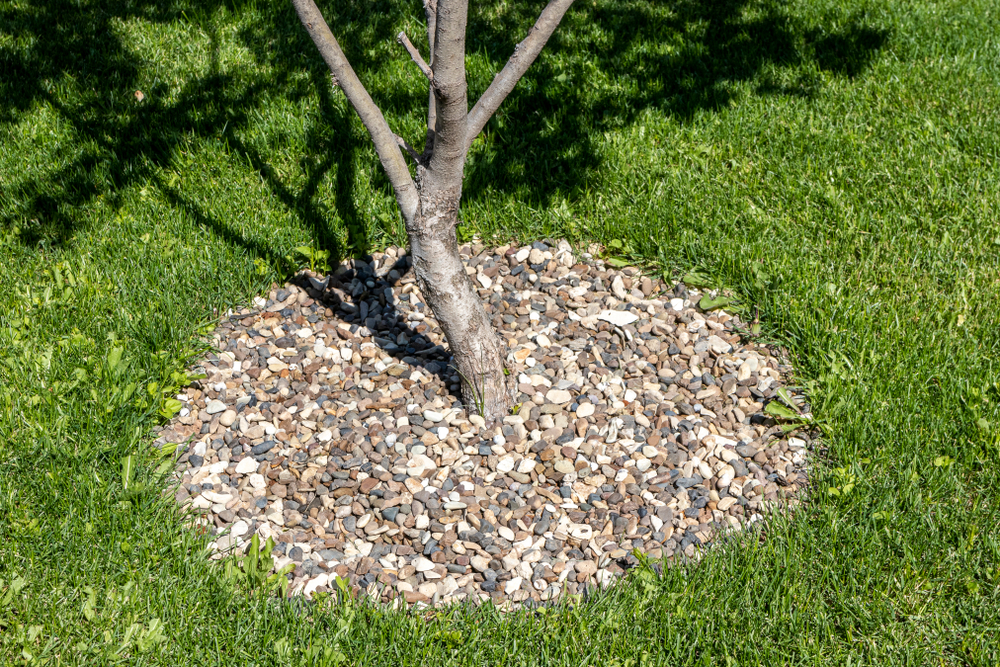
Mulch can be a great companion to rocks when landscaping around trees. While rocks provide structure and drainage, mulch helps retain moisture in the soil, keeping it more consistent for the roots. A thin layer of mulch around the base of the tree, beneath the rocks, can create a balanced environment that protects the tree’s roots from extreme temperatures.
Be cautious not to pile mulch directly against the trunk of the tree, as this can encourage rot. Keep the mulch a few inches away from the trunk, allowing the bark to stay dry and healthy.
Select Rocks that Complement the Surrounding Landscape
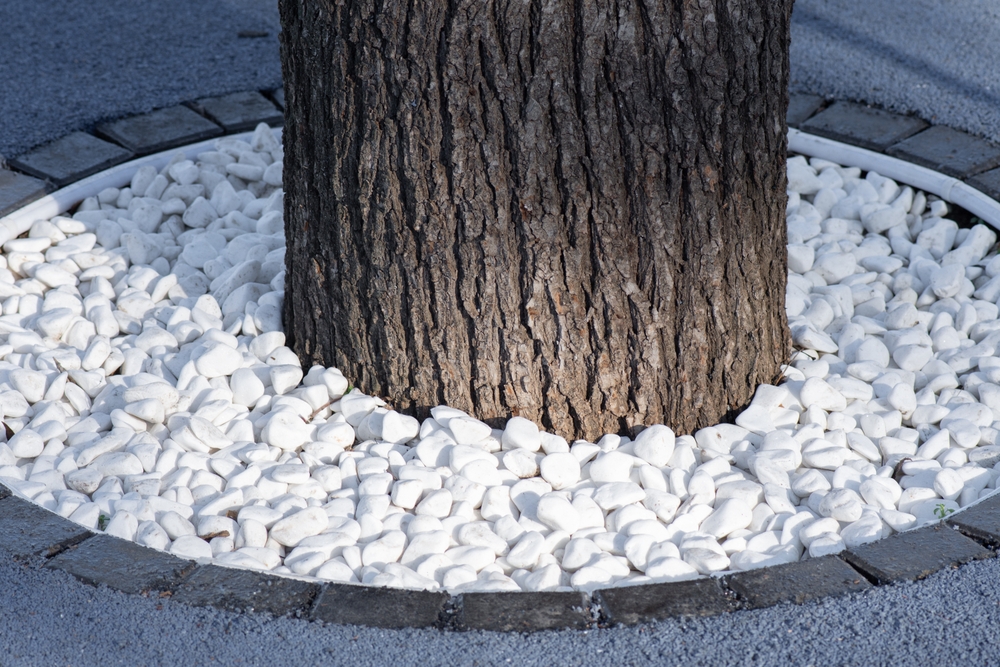
When choosing rocks for landscaping around trees, it’s important to select those that fit well with the surrounding landscape. Large, bold rocks might work well in a more rugged or natural setting, while smaller pebbles or gravel can create a softer, more refined look. The rocks should not overwhelm the tree but should instead blend seamlessly into the overall aesthetic.
Matching the color and texture of the rocks to other elements in the landscape can create a cohesive and pleasing design. This also helps highlight the beauty of the tree and its surroundings without making the landscaping feel out of place.
Plan for Tree Growth
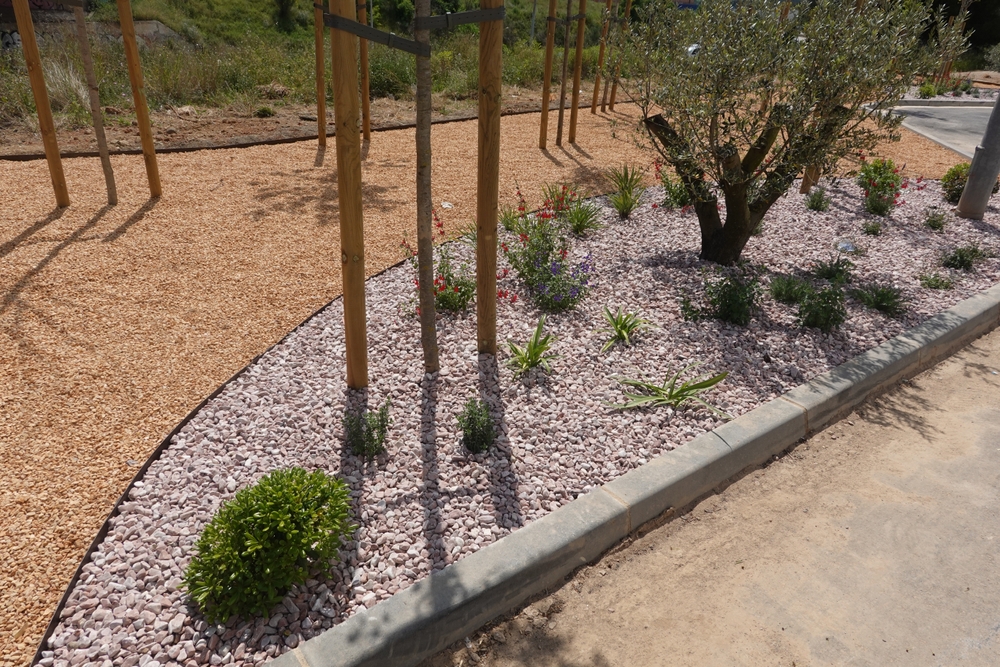
When planning your landscaping around trees, be sure to consider how the tree will grow over time. The area surrounding the tree will likely change as the tree matures, and the rocks mustn’t restrict growth. Planting rocks too close to the tree can cause root damage as the tree expands its root system.
To avoid this, make sure to allow for sufficient space between the tree and the rocks. Over time, you may need to adjust the landscaping to ensure the tree continues to thrive as it grows.
Use Natural Rock Features
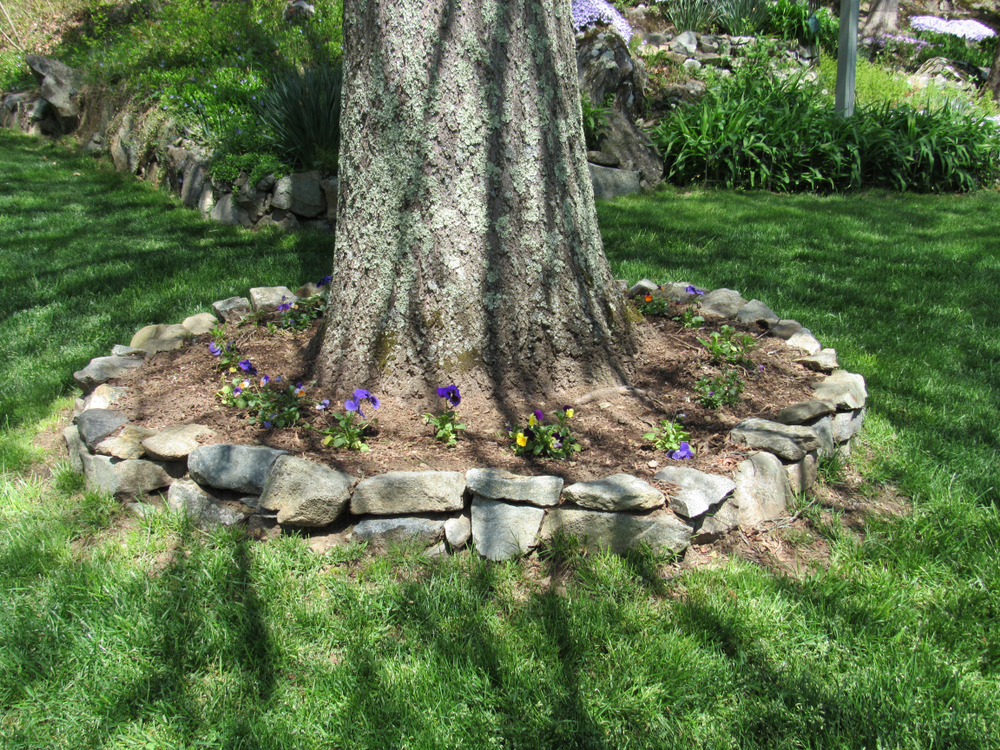
Opt for natural rocks over artificial materials to keep the environment around your tree as organic as possible. Natural rocks provide a better microclimate for tree roots and promote biodiversity in the surrounding soil. Artificial rocks may look good initially, but can disrupt the natural ecosystem, affecting not only the tree but also other plants in the area.
By using local or native rocks, you can further ensure that the materials are suitable for your specific soil conditions and climate, providing a natural balance that supports tree health.
Add Low-Growing Plants for Ground Coverage
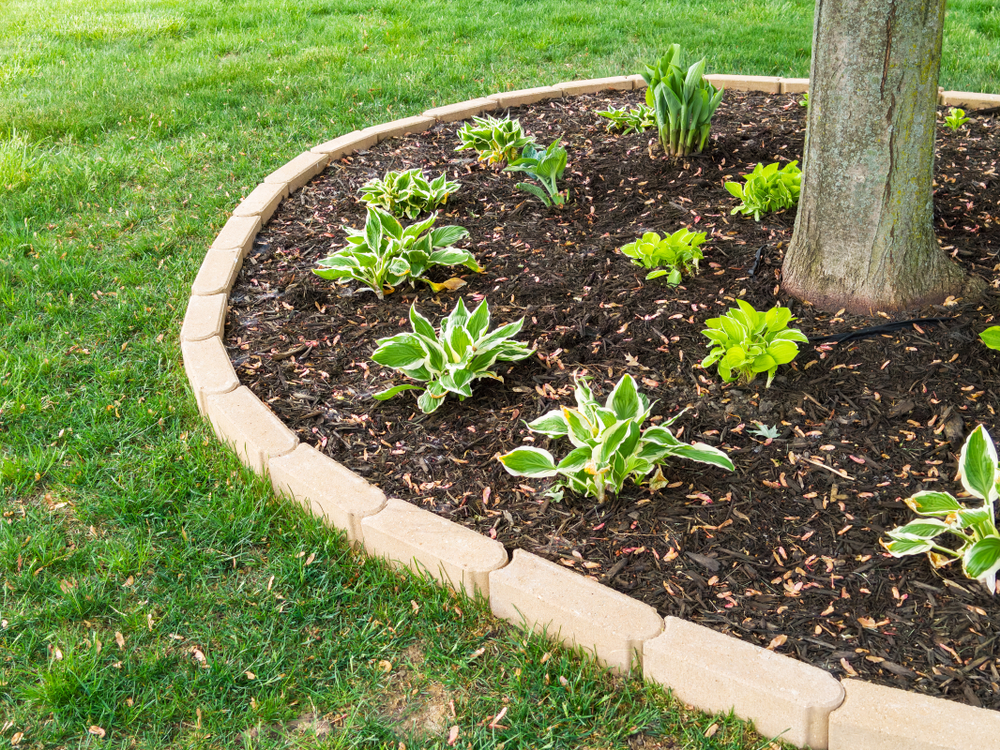
Landscaping around trees with low-growing plants can be beneficial, especially if you want to add more life to the space beneath the rocks. Groundcover plants like moss, ferns, or creeping thyme are excellent choices as they grow low to the ground, prevent erosion, and do not compete heavily for nutrients with the tree. These plants also create a more natural aesthetic that complements the rocky landscape.
Be sure to select plants that are tolerant of the conditions around the tree, including shade and dry soil. This way, the plants can thrive without stressing the tree or its root system.
Keep Rocks Away from Tree Roots
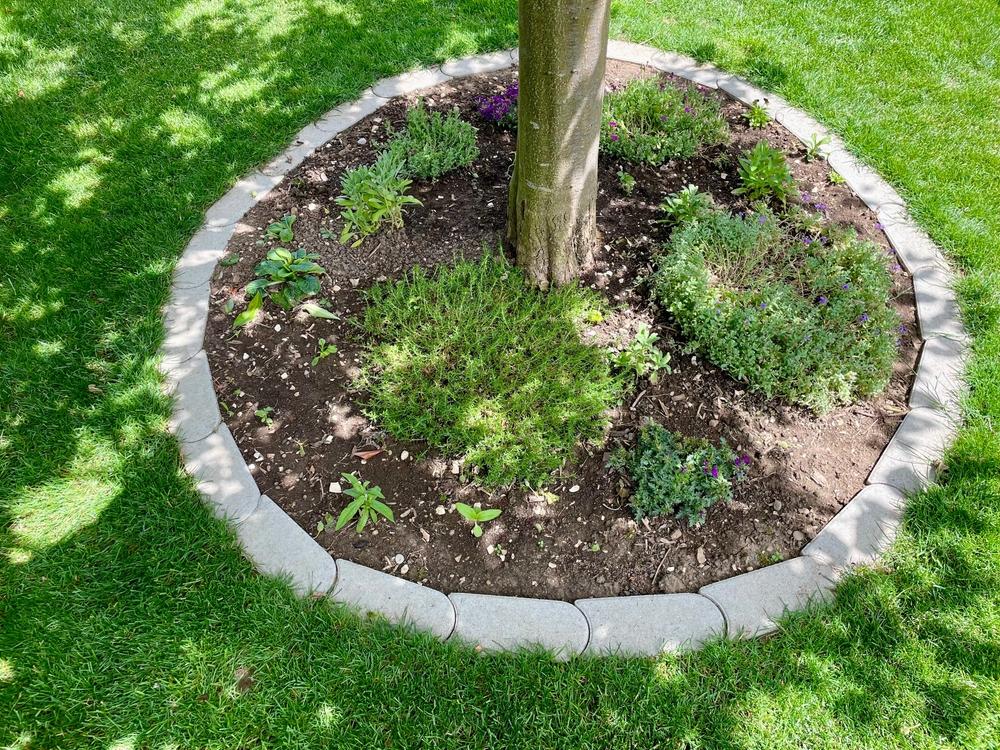
It’s crucial to avoid placing rocks directly on top of visible tree roots. Rocks placed on tree roots can cause physical damage over time as they shift or settle. The pressure from the rocks can crush the roots, interfering with the tree’s ability to absorb water and nutrients. Instead, aim to place rocks around the perimeter of the tree, keeping the roots free to grow and expand without obstruction.
If the roots are above ground, consider covering them with a thin layer of mulch instead of rocks. This will provide them with some protection while still allowing the tree to breathe and thrive.
Use Rocks to Create a Decorative Border
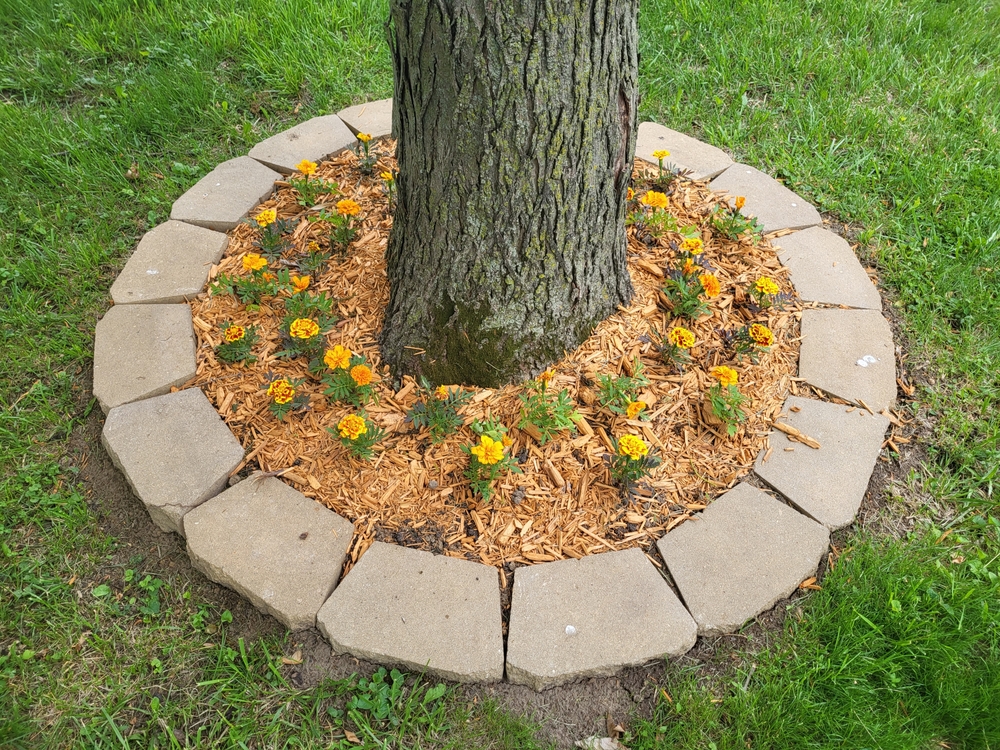
Rocks can be used to create a decorative border around the tree. This helps define the space and creates a neat appearance in your landscape. It can also protect the tree’s root zone from being disturbed by foot traffic or lawnmowers, reducing the risk of damage.
However, when placing rocks in a border, avoid compacting the soil too much. A loose, well-drained border allows for healthier root growth and helps keep the tree in good condition.
This article originally appeared on Avocadu.
